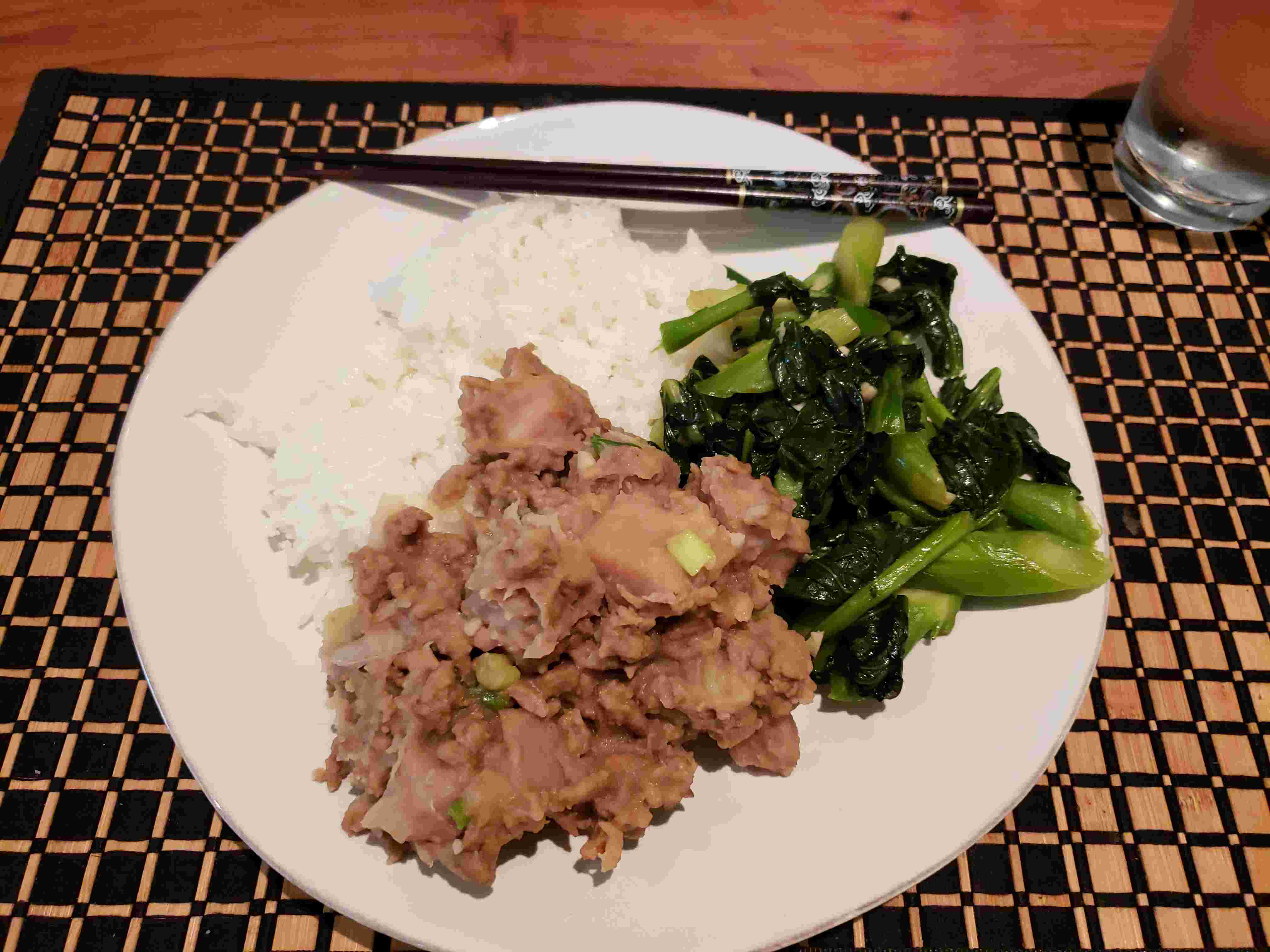
I present to you, the humble but delicious taro!
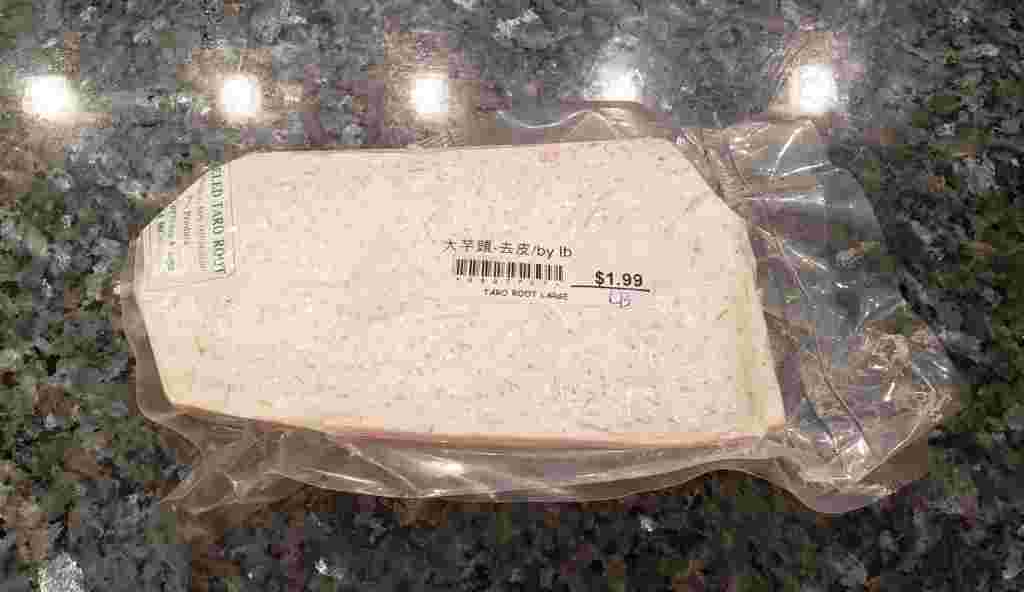
Or, the humble malanga! Folks, I must be honest – I don’t actually know what this thing is called. I’ve always been told growing up that it was taro. However, I’ve since seen it labeled as both taro and malanga in supermarkets, and what I’ve found on the internet is hardly conclusive. Either way, it hardly matters – they are close cousins, sharing the same family. I’m actually now convinced that anything labeled taro can really be one of many cousins, and it’s more important to just go by appearance when grocery shopping. I’m going to call this thing taro throughout the rest of the post. Let me know your opinions, but unless I get definitive evidence otherwise, taro it shall be.
The taro I love, the taro I’ve always eaten in this recipe growing up, is a large, ovoid tuber, about 2-3 pounds in size, with light brown, bumpy, scaly skin. I don’t usually buy it in its completely unprocessed form, however; in the Chinese supermarkets I’ve shopped at, it’s usually peeled, cut into pieces, and vacuum-sealed, as in the picture above. The flesh is a milky, slippery white, with flecks of purple interspersed throughout. Growing up, my mom always told me that the less purple flecks you can see, the more tender the tuber, but that seems like an old wives’ tale, so take from that what you will.
Sometimes, you’ll see smaller tubers also being labeled taro (I know – it is a confusing world out there). These tubers will be much smaller, maybe slightly smaller than the size of your fist, with dark brown skin covered with shaggy brown hair. All I can say is that these are another cousin, and have a distinctly different texture and slightly different flavor, and I don’t use them for this recipe.
Anyway! Nomenclature aside, taro is absolutely delicious. It’s got the texture of a potato, but a stronger nutty, umami flavor – like cassava or yam. It can be treated exactly like a potato, and be boiled, mashed, fried, or chipped. However, even though it’s very starchy, it’s still more nutritious than a potato, and contains lots of fiber, potassium, iron, vitamin C, and vitamin A. My favorite way to prepare it is to simmer it, then mix it with heavily seasoned, salty pork and lots of garlic and scallions, until the taro edges break down and the whole thing turns into a warm, comforting, flavorful mash, with intact hunks of taro and spicy meat. It’s not pretty food. But trust me – it is the epitome of ugly delicious.
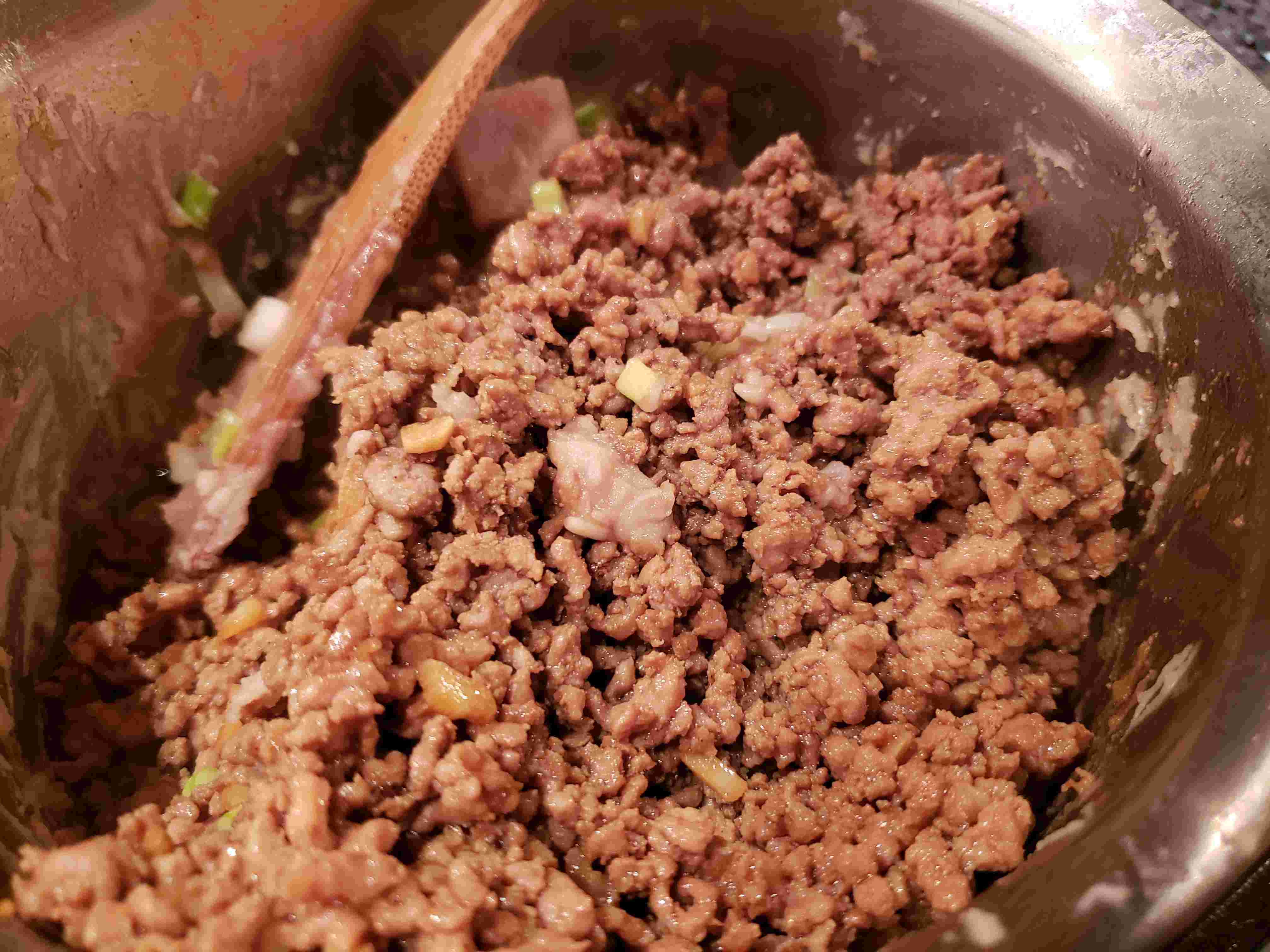
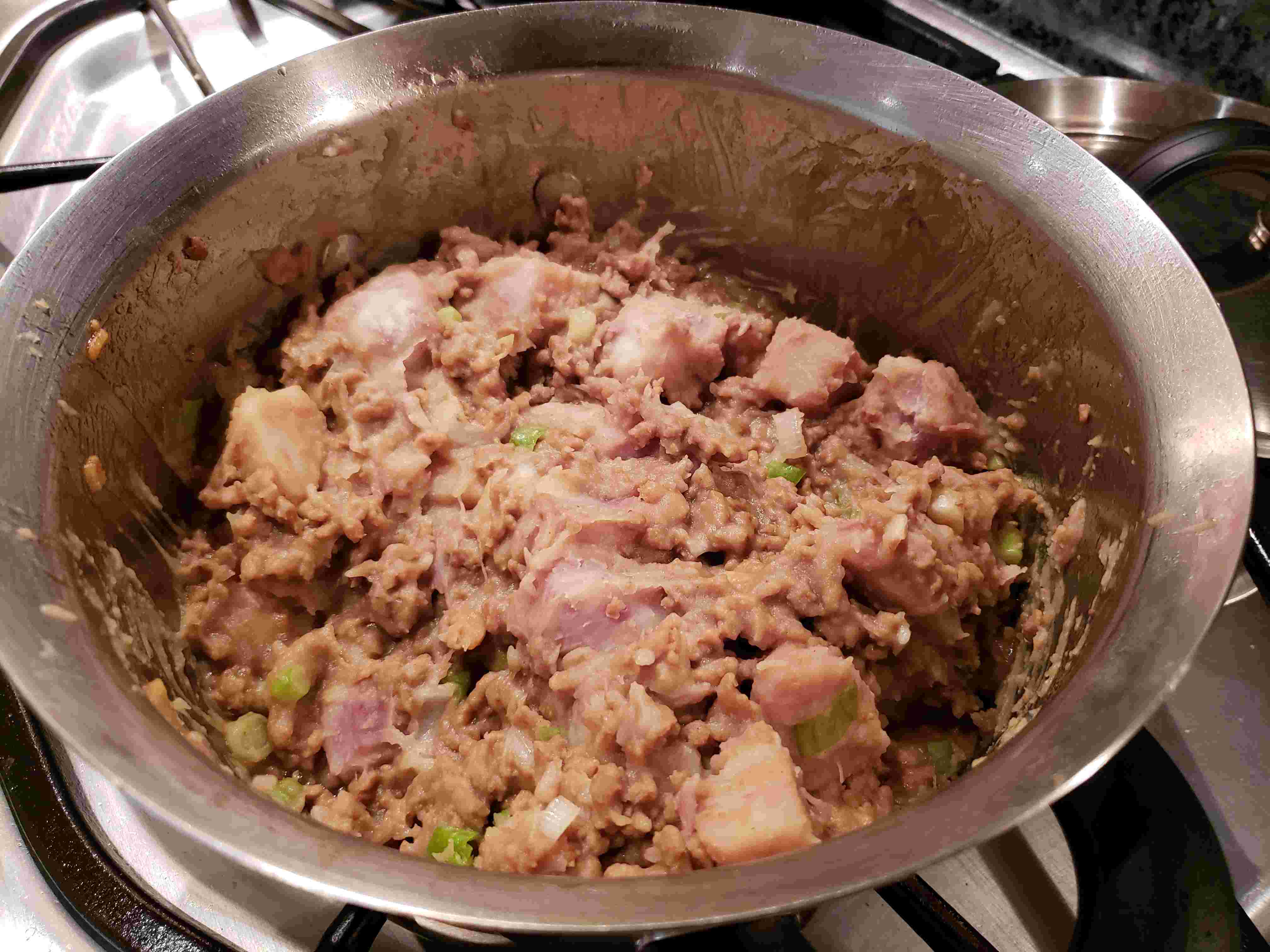
I’ve always eaten this with rice – this makes quite a salty, strongly flavored dish, and pairs wonderfully with fluffy rice and some garlicky green vegetables. Yes, it’s carb on carb, but I’m the girl who used to eat potato salad sandwiches as a child. Besides, taro is healthy – see above! – and it’s delicious with rice.
Served with rice and sauteed Chinese broccoli. Total time to dinner, including sides: about 1 hour, but maybe 20 minutes of that is waiting for the rice to cook in the rice cooker.
| Servings | Fuss Factor | Total Time | Prep Time | Cook Time |
|---|---|---|---|---|
| 4-6 | 1 | 35 minutes | 15 minutes | 20 minutes |
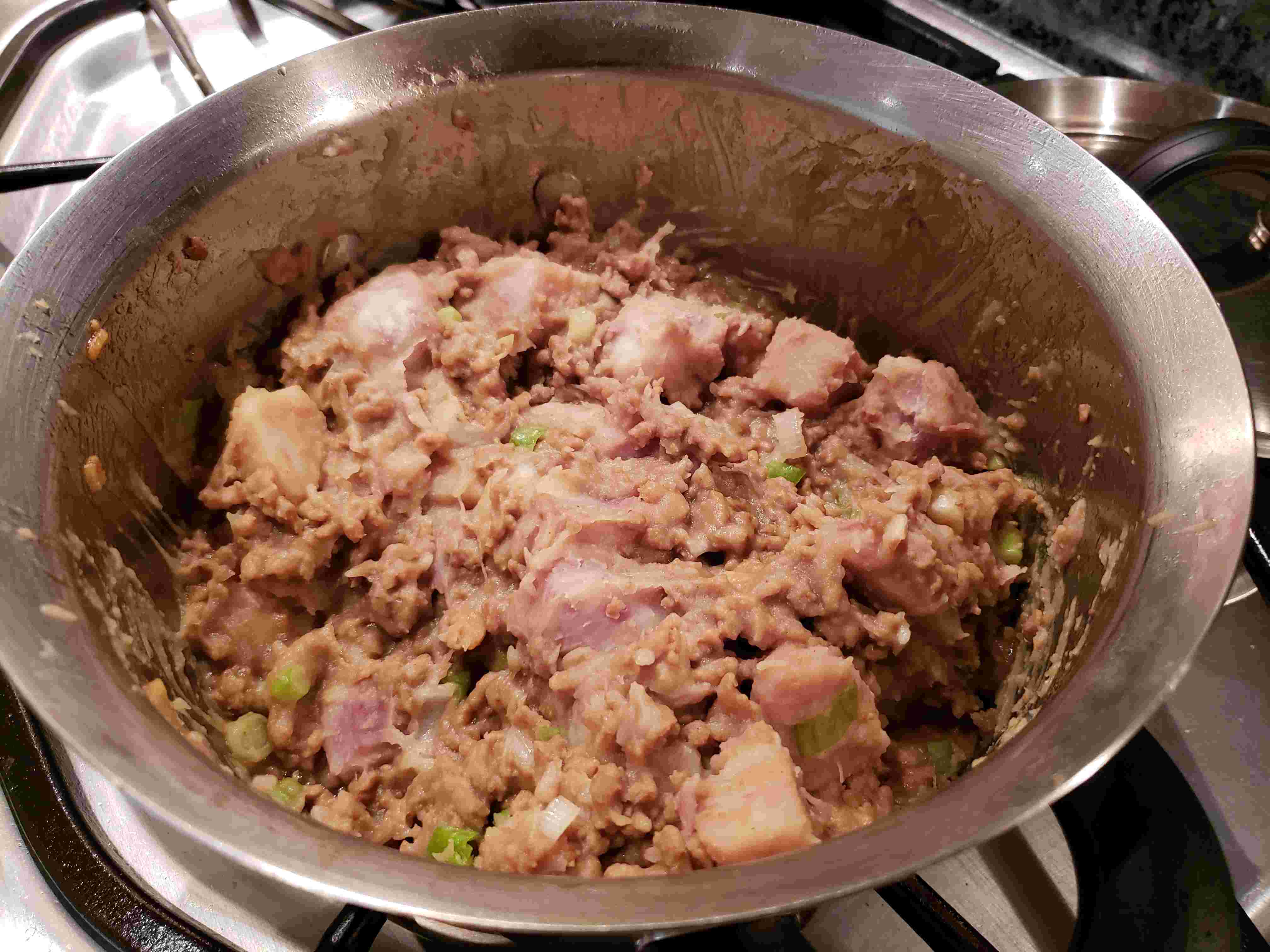
Taro with Minced Pork and Scallions
Ingredients
Marinade for the pork:
- 2 tablespoons regular soy sauce
- 1 tablespoon sesame oil
- 1 tablespoon oyster sauce
- 1 tablespoon corn starch
- Optional: Szechuan peppercorns, white pepper
For the rest of the dish:
- 1 pound ground pork
- 1 1/2 - 2 pounds taro
- 4 cloves garlic, minced
- 1 bunch scallions, roughly chopped
- 1 tablespoon regular soy sauce
- Canola or neutral oil
- Salt and pepper
Instructions
-
Combine the pork with all of the marinade ingredients. Mix gently to combine, and let sit for at least 15 minutes while you prepare the taro and rest of the ingredients.
-
If you have a whole taro, cut it in half and cut away the brown skin with a knife. Rinse bits of skin and other debris away. Cut the taro into large chunks, about 1.5-by-1.5 inches.
-
Heat 1-2 tablespoons of canola oil in a large pot over medium-high heat. Add the minced garlic and half of the scallions and cook until fragrant, about 30 seconds. Add the pork together with all of the marinade. Cook, stirring, until the pork is cooked through, about 5 minutes. Remove the pork from the pot with a slotted spoon, leaving behind the sauce, and set aside.
-
Add the cubed taro to the pot. Add the soy sauce, some dashes of salt and pepper, and about 3/4 cup of water to the pot, and stir to combine over medium-high heat. When the liquid in the pot comes to a boil, cover and simmer at medium-low heat for about 15-20 minutes, stirring periodically. The taro is ready when it starts crumbling at the edges and a fork moves cleanly and easily through it. You can also taste a piece - it should be starchy and soft throughout, like a boiled potato, with no hard or crunchy bits. If the pot starts looking dry before the taro is ready, add more water, 1/4 cup at a time. If the taro is ready and the pot still looks very soupy, uncover and turn the heat up to evaporate the extra liquid.
-
When the taro is ready, add the rest of the scallions and the pork back into the pot, and stir gently to combine and heat everything through. I like to break apart the outer edges of the taro so that it forms a mash, but there will still be distinct bits of taro within the mash. It's sort of like the consistency of a warm potato salad!




